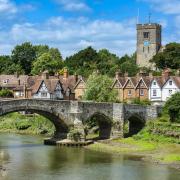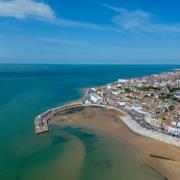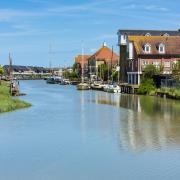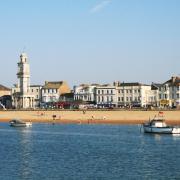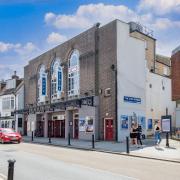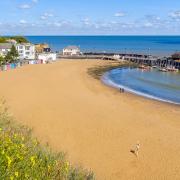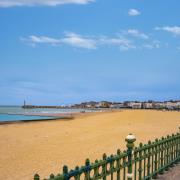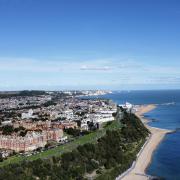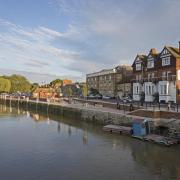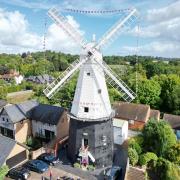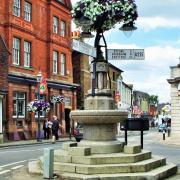Known for its wild countryside and farmland, the wonderful Weald of Kent is interspersed with some of our county’s prettiest historic villages and towns

From the old English word 'wald', meaning forest, the term Weald was used to describe the ancient wilderness of grassland, scrubland and forests that stretched across the south east of England from the Kent marshes to the New Forest in Hampshire.
The Kentish part of this landscape was known as the Forest of Anderida to the Romans during their occupation. The Domesday Book of 1086 showed the Weald to be the largest remaining area of woodland and heath in the whole of England at the time.
For generations the Weald of Kent was comprised of a scattering of small settlements, with cattle and pigs grazing loose in the woods. But by 1200 much of the Weald as we know it had already formed, with most of the villages, towns and farmland we would recognise today.
It was during the Middle Ages that the Weald became one of the wealthiest areas in the country, thanks to the trees in it its forests and the iron ore in its ground.
During the Tudor and early-Stuart eras, the Weald was the main iron-producing region in Britain. Local iron ore had been used since the Iron Age but by the mid-1500s there were more than 100 furnaces and forges, employing huge numbers of the local population. The furnaces were kept blazing with wood from the surrounding forests, changing the very landscape.
The craftsmen's work was highly sought after and many made their fortunes. Larger homes were built, including the iconic 'Wealden hall' design, many of which survive today. It was only the Industrial Revolution that led to the industry fading, with the last major furnace closing in 1813.

Best bits
Quintessentially Kentish countryside and farmland, scattered with pretty villages and country towns, this Area of Outstanding Natural Beauty is popular with walkers, cyclists and nature lovers.
A place to slow down, to enjoy woodland walks and lazy pub lunches, it attracts visitors escaping to the country for the weekend - many of whom like the pace of life so much they remain.
It has several attractions, including some excellent National Trust properties. The Scotney Castle Estate in Lamberhurst, opened to the public in 2007, offers fabulous walks in its 770-acre grounds, and not one but two historic homes to explore. The 14th-century moated castle was replaced by a more accessible country manor house in 1843 but, rather than being demolished, it was left as a romantic ruin to add interest to the gardens.
An external staircase leads to an apartment rented out in the 1970s and '80s by Prime Minister Margaret Thatcher, which she used as a country bolt hole.
Not far away is Sissinghurst Castle, another Trust property and the former home of writer and gardener Vita Sackville-West. Vita's best-selling works included The Edwardians and All Passion Spent but it's the gardens that are the big attraction here, with visitors coming from all over the world to see her ground-breaking design.
An Elizabethan ruin when she and husband Harold Nicolson bought the estate in 1930, the many buildings scattered across the site include a tower, where Vita did her writing in seclusion and which is now open to the public.

Keen walkers and cyclists, meanwhile, will find plenty to keep them occupied at Bedgebury National Pinetum and Forest, near Goudhurst, where 320 acres of woodland includes cycle routes, footpaths, play equipment for children and a Go Ape! tree climbing centre.
This year will see the return of the Bedgebury at Christmas event. A one-mile path through the forest will be lit with thousands of festive lights, leading to a range of Victorian fairground rides and the chance to glimpse Santa and his elves.
And there's plenty more outdoor action on offer at Bewl Water. With a 13-mile route around the reservoir for walkers and cyclists, there's also a sailing club, fishing, water sports and this summer saw the introduction of a giant inflatable assault course on the water.
The region has also become the home of the English wine industry in recent years, with award-winning wineries including Chapel Down in Tenterden, Biddenden Vineyards, Gusbourne in Appledore, Hush Heath in Staplehurst and Woodchurch Winery.
There are plenty of tours and tastings available at their visitor centres and several companies are offering escorted tours of the Kentish wineries from London.
Other nearby attractions include the Spa Valley Railway at Tunbridge Wells and the Kent & East Sussex Railway at Tenterden, Groombridge Place, Penshurst Place and the atmospheric ruins of Bayham Abbey in Lamberhurst.

Events
These friendly little communities have plenty of events to look forward to throughout the year. The many villages celebrate with their various fairs and fetes, including Biddenden Tractorfest and Country Fair (August), the Weald of Kent Ploughing Match (September) and the quirky Cranbrook Apple Fair (October).
Local music events are plentiful too and next summer is due to see the return of Tentertainment, Tenterden's big free music weekend.
The busy villages offer many groups and clubs, with everything covered from beekeeping to Morris dancing.
The Kino cinema at Hawkhurst is much loved by film lovers who don't fancy the trek to the nearest big town multiplex.
Eat & shop
The main focus for shopping trips are Tunbridge Wells, Cranbrook and Tenterden, but most villages have their own convenience stores, pubs and coffee shops.
Best known for warm and welcoming country pubs, many with great views, a few to try include The Bull at Benenden, The Halfway House in Brenchley, The Star and Eagle Hotel perched near the top of the steep high street in Goudhurst, The Three Chimneys at Biddenden, The Bell and Jorrocks in Frittenden and The Milk House at Sissinghurst, but that's just the tip of a very long list.
For a special meal out, head to The West House in Biddenden (which has, very sadly, just lost its Michelin star after an impressive 16 years) or The Small Holding in Kilndown, where our 2018 Kent Life Chef of the Year Will Devlin has just been awarded 'Chef to watch' status in the latest Michelin Guide. We saw him first!
Cafés to look out for include H+J Abode and Weeks Tearoom in Goudhurst, The Vinery Café at The Walled Garden nursery in Hawkhurst, The Tiny Teapot and The Bakehouse in Biddenden, Sandhurst Tearooms, Frankie's Farmshop in Staplehurst and Benenden's Community Shop and Café, which also has its own Post Office.






